FMCG Packaging in India: Cost, Value, and Strategic Opportunity
Index
Introduction
1.1 Overview of Packaging as a Strategic Tool
1.2 Market Growth and Industry Outlook
Packaging as a Cost Driver – The Hidden Expense That Adds Up
2.1 Cost Contribution Across Product Types
2.2 Case Study: Hindustan Unilever’s Project Shakti
2.3 Key Strategies to Reduce Packaging Costs
Packaging as a Brand Differentiator – The First Impression That Sells
3.1 Role in Consumer Perception
3.2 Case Study: Paper Boat’s Nostalgic Packaging
3.3 Key Strategies for Brand-Driven Packaging
Supply Chain Optimization – Packaging as a Logistics Advantage
4.1 Impact of Packaging on Transportation and Storage
4.2 Case Study: Marico’s Bottle Redesign
4.3 Key Strategies for Supply Chain Efficiency
Premiumisation Through Innovative Packaging – Creating Perceived Value
5.1 Balancing Cost with Consumer Perception
5.2 Case Study: Zepto’s Insulated Delivery Bags
5.3 Key Strategies for Premium Packaging
Risk and Regulatory Dynamics – Navigating Compliance and Market Uncertainty
6.1 Material Price Volatility and Sourcing Challenges
6.2 Regulatory Compliance and ESG Pressures
6.3 Key Strategies for Risk and Compliance Management
Conclusion – Rethinking Packaging as a Business Imperative
Introduction
Packaging as a Strategic Business Tool
Packaging has evolved beyond its traditional role of protecting products—it is now a critical business tool shaping the fast-moving consumer goods (FMCG) industry in India. It influences cost efficiency, brand perception, supply chain optimization, and regulatory compliance. With India’s FMCG sector projected to grow at a CAGR of 14.9% through 2030 (Source: IBEF, India Brand and Equity Foundation), the packaging industry is expected to exceed USD 92.8 billion by 2034 (Source: Future Market Insights). This rapid expansion highlights a key insight: packaging is no longer just a back-end function—it is a strategic priority. For FMCG brands navigating price-sensitive markets, fragmented logistics, and evolving sustainability regulations, packaging decisions can directly impact profitability and long-term success.
Packaging as a Cost Driver – The Hidden Expense That Adds Up
Packaging can contribute 10% to 40% of a product’s total cost, depending on materials, logistics, and production scale. For Startups and Small Manufacturers, this percentage can be even higher due to limited economies of scale. In India’s sachet-driven FMCG market, reducing packaging costs by even a single paisa per unit can lead to significant savings over millions of units.
Case Study: Hindustan Unilever’s Project Shakti
HUL optimized rural distribution by using low-cost, lightweight sachet packaging, allowing better outreach at minimal costs. However, cost efficiency is not just about cutting material expenses—it requires smart forecasting, inventory planning, and MOQ (Minimum Order Quantity) negotiations
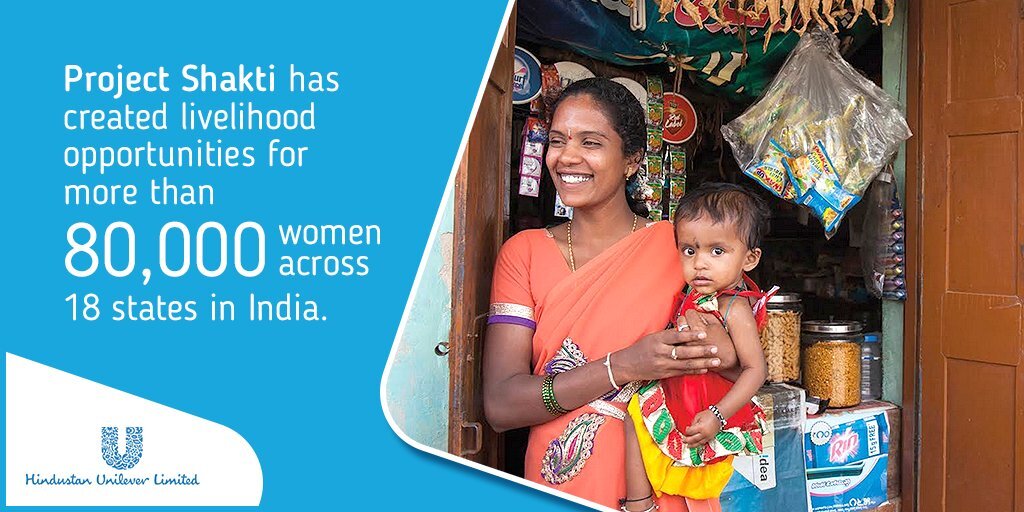
Key Strategies to Reduce Packaging Costs
- Breakdown packaging costs: ITC conducts supplier-level audits for its paperboard packaging vertical to optimize cost centers.
- Flexible MOQs:Indian SMEs are renegotiating supplier terms through pooled procurement and shared warehousing models).
- Demand forecasting Marico’s planning model for Parachute coconut oil leverages lean inventory and standardized bottle design to reduce warehousing costs.
Packaging as a Brand Differentiator – The First Impression That Sells
Packaging is more than just a container—it is the first thing consumers notice. It communicates quality, trust, and emotional appeal, influencing purchasing decisions within seconds.
Case Study: Paper Boat’s Nostalgic Packaging
Paper Boat built its brand identity around story-driven packaging, evoking childhood memories. Even legacy brands like Britannia have refreshed their packaging to appeal to younger urban consumers without altering product formulas.
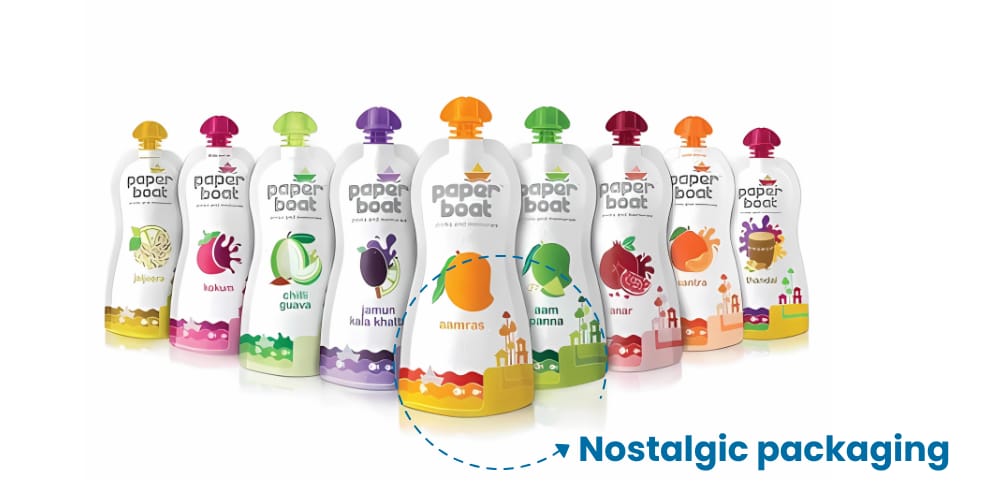
Key Strategies for Brand-Driven Packaging
- Balancing cost and aesthetics Startups like Slurrp Farm use minimal yet premium packaging to stand out on retail shelves.
- Using local materials and craftsmanship: Forest Essentials incorporates incorporates handmade paper and botanical dyes to signal Ayurvedic authenticity—a strategy now exported globally.
- Maintaining logo consistency and color standardization: Amul’s unchanged mascot and color schemes aid brand recall while reducing redesign expenses.
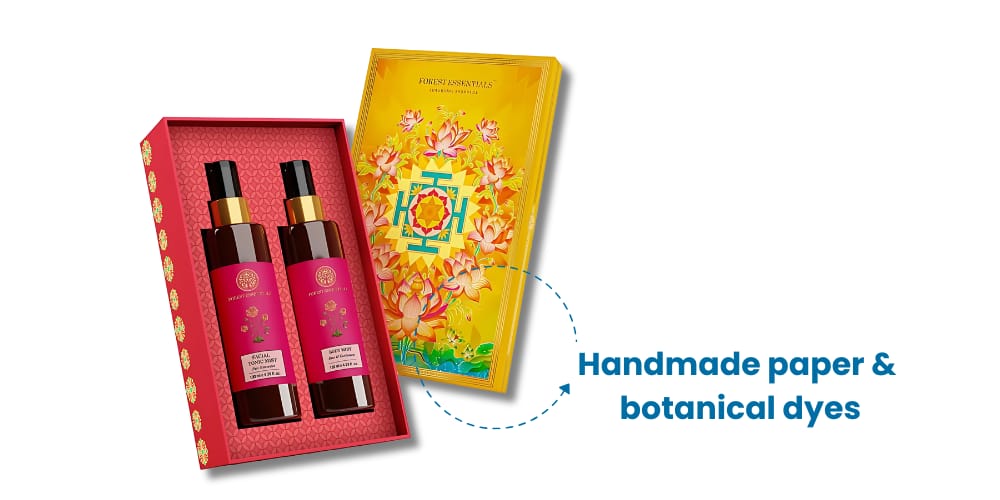
Supply Chain Optimization – Packaging as a Logistics Advantage
Logistics costs in India account for 13–14% of GDP (Source: Georgetown Journal of International Affairs), much higher than the global average of 8%. For FMCG startups with fragmented distribution, inefficient packaging can increase transportation costs and storage inefficiencies.
Case Study: Marico’s Bottle Redesign
Marico redesigned its Parachute coconut oil bottle with a flat-bottomed structure, reducing cargo space usage and bottle breakage. This enabled 10–15% more bottles per pallet, cutting transit losses.
Key Strategies for Supply Chain Efficiency
- Collaborate with vendors: Packaged food SMEs in Gujarat partner with Flexituff Ventures for customized flexible packaging to minimize wasted space.
- Optimize volumetric space: ITC’s master cartons for Aashirvaad atta are designed for vertical stacking, improving last-mile efficiency
- Use demand forecasting: Nestlé India’s analytics tools ensure bulk shipments are dispatched in synchronized clusters, reducing fragmented deliveries.
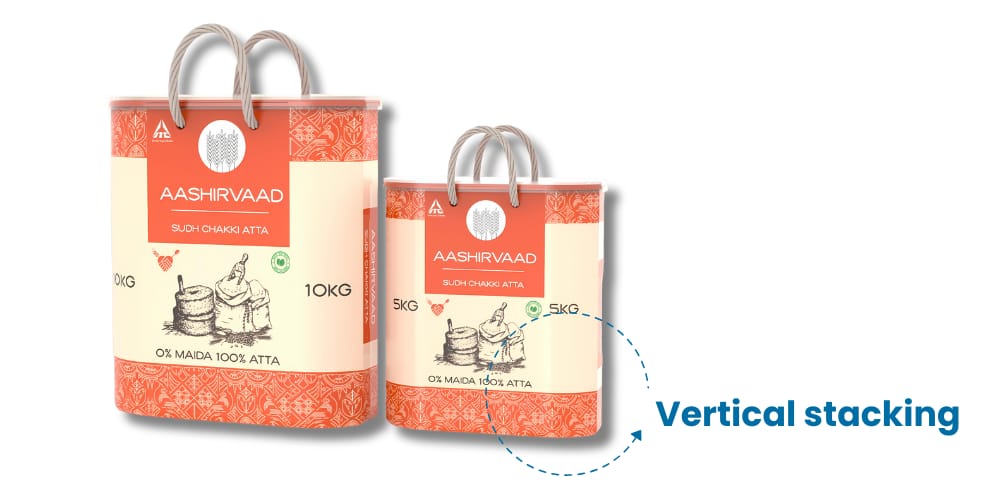
Premiumisation Through Innovative Packaging – Creating Perceived Value
Premiumisation is not just about aesthetic appeal—it is about justifying a higher price through packaging innovation.
Case Study: Zepto’s Custom-Printed Insulated Bags
Zepto, India’s 10-minute delivery startup, uses custom-printed insulated bags. Though higher in unit cost, these bags preserve freshness, enhance brand recall, and encourage repeat usage, making them an investment rather than an expense.
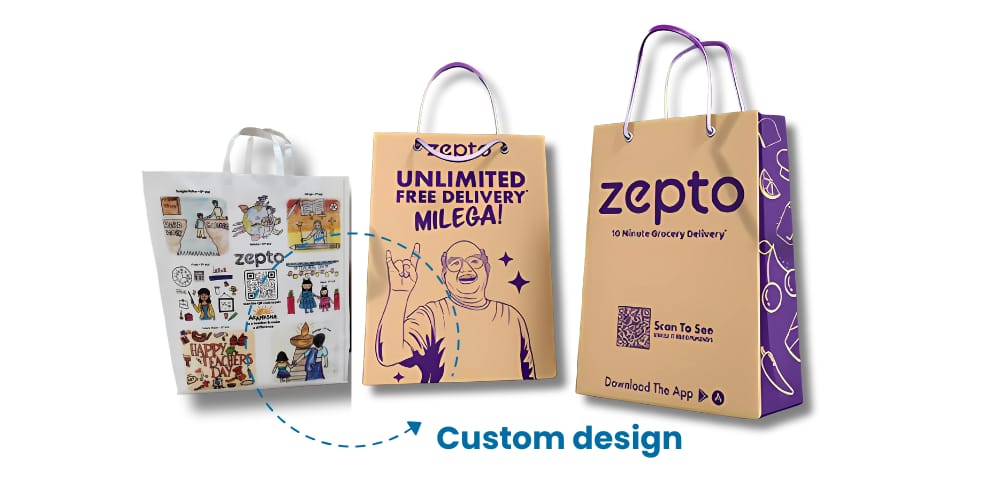
Key Strategies for Premium Packaging
- QR codes for engagement: Tata Soulfull uses QR codes to educate consumers about sourcing and health benefits
- Communicating sustainability: Conscious Food and Epigamia include environmental impact metrics on packaging to align with urban millennials’ values
- Innovation with cost-benefit clarity: FMCG companies linking packaging innovation to NPV analysis report 11% higher returns over two years (Bain India, 2023).
Risk and Regulatory Dynamics – Navigating Compliance and Market Uncertainty
Packaging depends on volatile inputs—plastic, paperboard, inks, dyes, adhesives—all subject to price fluctuations. The 2022 spike in crude oil prices led to a 35% increase in HDPE costs, forcing FMCG companies to switch to PET or biodegradable alternatives. At the same time, regulatory mandates—FSSAI labelling, Extended Producer Responsibility (EPR), and ESG compliance—are non-negotiable.
Key Strategies for Risk Management
- Hedging and long-term contracts: Godrej Consumer Products uses futures contracts to hedge plastic resin inputs across quarters.
- Compliance matrix management: Dabur India digitized its packaging compliance dashboard to align with BIS standards, FSSAI labelling, and EPR tracking.